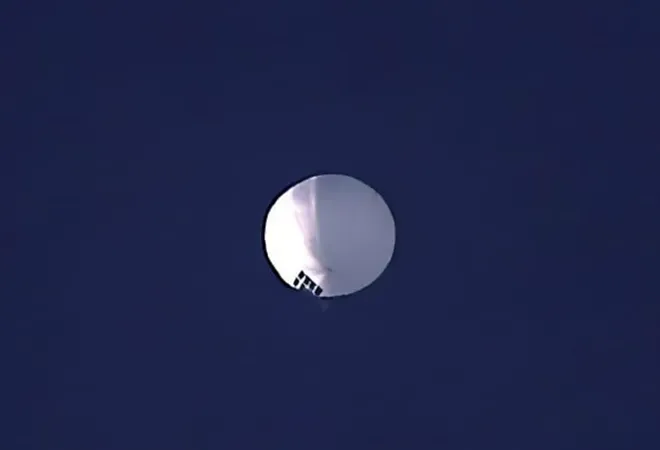-
CENTRES
Progammes & Centres
Location
The Chinese spy balloons are a deceptively simple aerial surveillance tool that even the US admitted to failing to detect before the recent missile hit. India needs to up its game in this department

The slow movement of the PRC’s inflatable object carrying significant detection and intelligence collection equipment gave it considerable loiter time over a target area allowing it to pick up Signals Intelligence (SIGINT) against specific targets.Notwithstanding their seeming innocuousness, the advantages of using balloons are several. Firstly, a balloon of the kind the Chinese used moves very slowly and had a substantial solar array and instrumentation weighing roughly a tonne, geared towards detecting electronic emissions, microwave emissions, radar signals and collecting photographic intelligence. The slow movement of the PRC’s inflatable object carrying significant detection and intelligence collection equipment gave it considerable loiter time over a target area allowing it to pick up Signals Intelligence (SIGINT) against specific targets. The extended loiter time of the balloon given its low altitude and proximity to the earth’s surface helps geolocation of targets with great precision and map communications, emissions, and signal patterns effectively.
All the information and surveillance data gathered by the Chinese is likely to help them in wartime in identifying targets with precision against continental United States.Satellites travel at more than 20,000 kilometres per hour giving them very little or limited dwell time over a geographic area even when they are used in clusters following each other in short order. A satellite once detected is easily trackable because its orbital trajectory is fixed. Hence the high orbital velocities of spacecraft combined with their fixed orbital path negate some of the real time advantages that a balloon can offer.
Very critically, balloons can be fitted with small motors allowing their flight path to be altered moving erratically making them very hard to detect.India faces more disadvantages. It is believed that the Chinese have sent balloons to Andaman and Nicobar (A&C) islands and it is unclear what India did about it. It is very likely New Delhi discovered them too late and could not do much. Consider what General Glen VanHerck who is the chief of the US North American Aerospace Defence Command (NORAD) said: “As NORAD commander, it’s my responsibility to detect threats to North America. I will tell you that we did not detect those threats. And that’s a domain awareness gap that we have to figure out.” This is a telling statement, because it reveals why the US, which is the most advanced aerospace power cannot detect something as rudimentary as balloon movement. This means India faces a tall order and no easy solutions. In order to detect China’s spy balloons, India will need considerably higher airborne surveillance assets such as drones and balloons of its own. India could also launch spy balloons of its own into Chinese territory giving its armed forces much needed SIGINT against Chinese targets. Hence, India could and must do to the PRC what the latter is doing to India, if it is not already.
The views expressed above belong to the author(s). ORF research and analyses now available on Telegram! Click here to access our curated content — blogs, longforms and interviews.

Kartik Bommakanti is a Senior Fellow with the Strategic Studies Programme. Kartik specialises in space military issues and his research is primarily centred on the ...
Read More +